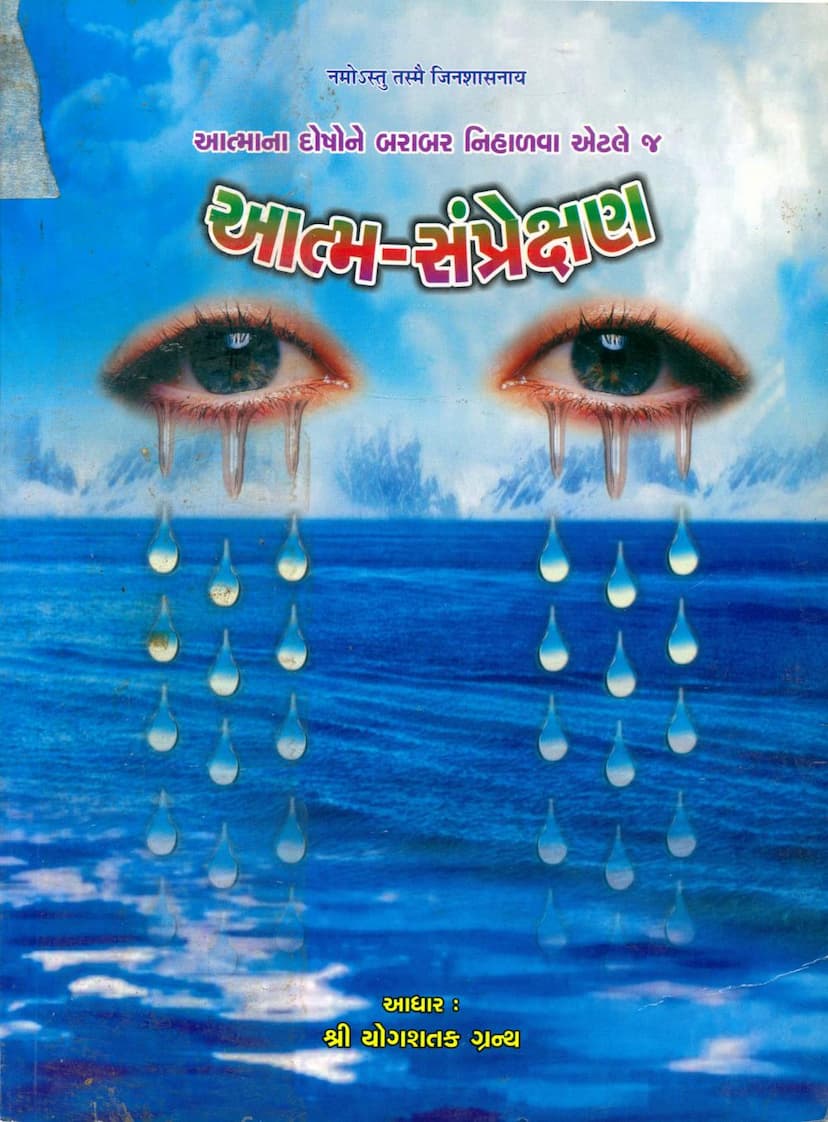Aatm Samprekshan
Added to library: September 1, 2025

Summary
This Jain text, "Aatm Samprekshan" (Self-Examination) by Gunhansvijay, published by Kamal Prakashan Trust, is a profound guide based on the "Shri Yogshatak Granth." The book emphasizes the crucial practice of Aatm Samprekshan, which translates to observing and understanding the faults within one's soul.
The core of the text is built upon the teachings of Acharya Shri Haribhadrasurishwarji Maharaj, inspired by Pandit Shri Chandrashekharvijayji. The author, Muni Gunhansvijay, a disciple of Shri Haribhadrasurishwarji Maharaj, aims to provide a detailed explanation and practical application of self-observation, a concept presented concisely in Yogshatak.
The book identifies and elaborates on eleven common faults or "doshas" that hinder spiritual progress. These include:
- Swarth (Selfishness): Focusing on personal gain in all aspects, even within monastic life.
- Irshya (Envy): Feeling distressed by others' virtues, happiness, or achievements, and desiring their downfall.
- Aalas-Kamchori (Laziness/Idleness): Avoiding work and responsibility, preferring inactivity.
- Asakti (Attachment/Affection): An excessive fondness or clinginess, particularly towards worldly pleasures and possessions.
- Drishti-dosh (Faulty Vision/Perception): Particularly focusing on the negative or lustful aspects when perceiving others, especially women.
- Ahankar (Ego/Pride): An inflated sense of self-worth, often masking underlying insecurities or seeking external validation.
- Majak-Mashkari (Joking/Mockery): Engaging in lightheartedness or jesting that can sometimes lead to unintended harm or disrespect.
- Swadosh-Bachav (Self-Defense/Avoiding Responsibility): The tendency to blame others or external circumstances for one's own faults and failures.
- Apeksha (Expectation): Having unfulfilled desires or expectations from others, leading to disappointment and negative emotions.
- Jid (Stubbornness): An unreasonable adherence to one's own will or opinion, refusing to yield or consider other perspectives.
- Kadagraha (Dogmatic Attachment/Blind Faith): An inflexible adherence to one's own beliefs or sect, often leading to the dismissal of valid points from others.
The text uses a question-and-answer format between "Man" (the mind) and "Aatm" (the soul) to clarify these faults. It describes how each fault manifests through relatable examples from daily life and spiritual practice, illustrating the subtle ways these vices can operate.
A significant portion of the book is dedicated to the first fault, Swarth (Selfishness), with detailed examples of how it affects interactions in monastic life, from sharing necessities to performing duties. The author highlights the detrimental effects of prioritizing personal comfort and gain over the well-being of fellow monks and the broader community.
The text then delves into Irshya (Envy), showcasing how subtle feelings of jealousy can arise even in seemingly virtuous individuals when comparing their progress with others. The author describes instances of feeling pleased when others falter and envious when they succeed.
Aalas-Kamchori (Laziness/Idleness) is presented with examples of avoiding mundane tasks like washing clothes or fetching water, demonstrating how a lack of willingness to serve can lead to a decline in spiritual discipline.
Asakti (Attachment) is explored through the lens of food cravings and the inability to share desirable items, revealing how even after renouncing worldly possessions, subtle attachments can persist.
Drishti-dosh (Faulty Vision) is addressed with powerful examples of how even learned individuals can succumb to negative perceptions, emphasizing the need for constant vigilance over one's gaze.
Ahankar (Ego) is meticulously dissected, exploring how pride can manifest in various forms, from seeking praise for spiritual practices to subtly demeaning others' efforts. The author provides numerous self-reflective examples to help readers identify hidden ego within their virtuous actions.
The remaining faults—Majak-Mashkari (Joking/Mockery), Swadosh-Bachav (Self-Defense), Apeksha (Expectation), Jid (Stubbornness), and Kadagraha (Dogmatic Attachment)—are similarly explored with detailed personal anecdotes and self-analysis. The author stresses the importance of introspection and identifying these tendencies within oneself to achieve true spiritual growth.
The book concludes with an emphasis on the necessity of first engaging in Bhavnashrut Path (chanting and contemplating scriptures like Shāntiśataka, Vairāgyaśataka, etc.) before undertaking Aatm Samprekshan. This preliminary step is vital for preparing the mind and creating the receptivity needed for effective self-examination.
The author expresses a strong desire for all beings to benefit from this reflection, acknowledging that some examples are based on personal experiences, others on observations of others, and some are imaginative but relatable. The overarching message is that by diligently observing and rectifying internal faults, one can achieve a state of purity and ultimately liberation. The text includes prayers and requests for divine grace to overcome these obstacles.